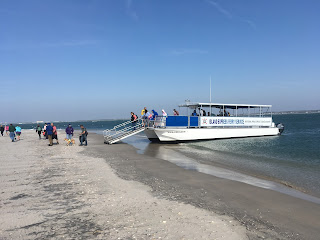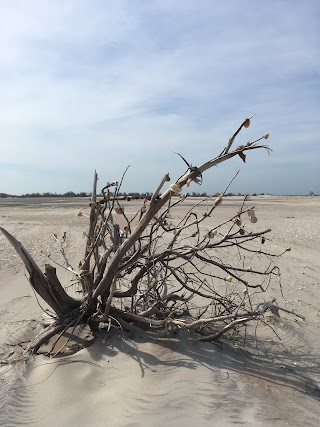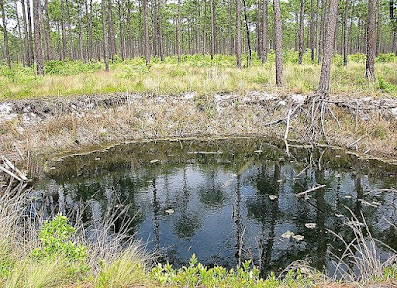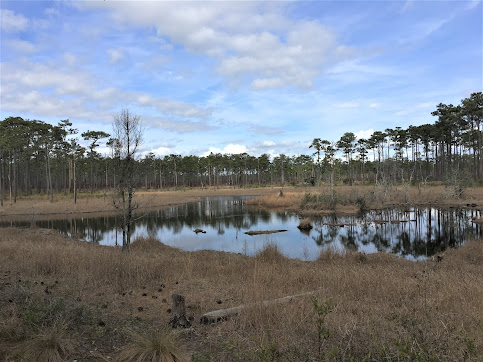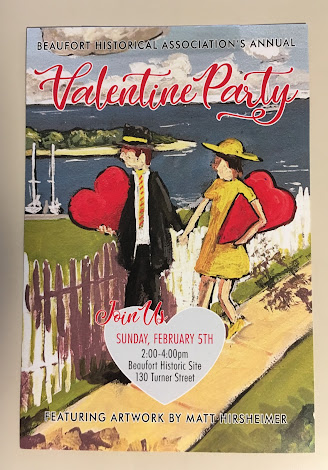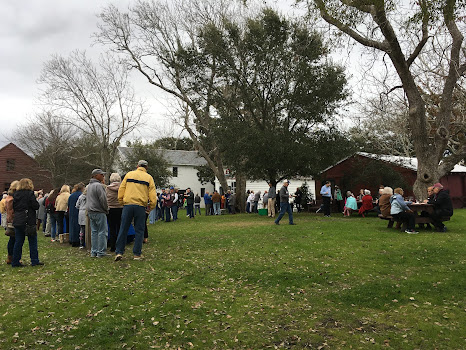It has been two weeks since I have posted anything to this blog, and that lapse
is partly because of all of the activities we find ourselves occupied with in
this last month of our Sabbatical. We
learned that our friends Billy and Mary from Highlands were staying in Emerald
Isle, so we met them for lunch in Beaufort last week on Valentine’s Day, and we
had a good time catching up over delicious and authentic Mexican food at Front
Street Taco, a place we had been intending to try.
“You two find so much to do!” Mary told us, but she didn’t know the half of
it.
We had dinner reservations that
night, for example, at Amos Mosquito’s (they only take reservations on New Year’s
and Valentine’s Day) and it was all delicious.
Dessert, in which we seldom indulge, was S’mores – the marshmallows roasted
over an open flame at our table – and it was a lot of fun.
These photos are some of the ones Martha posted on Facebook, and from the
comments they attracted a lot of attention, including the information that S’mores
were enjoyed (in memory, at least) by many of our friends.
We have also been hiking in addition to running, first at Fort Macon, where the
three-plus-mile Elliott Coues Nature Trail winds through a maritime forest from
the Fort to the Picnic Area, where we run our intervals during the week. This part of the trail is sheltered from wind
and features sprawling live oak trees and expanses of salt marsh to the north.
We stopped at one point and noticed a large white bird perched on a branch
above the still water, which I am guessing with its short neck may have been a cattle
egret, although it was large for that.
A blue heron, perhaps?
From the Picnic Area, the trail returns to the Fort on the ocean side,
winding around and over sand dunes where there are spectacular views of the
surf.
The trail here is stabilized from
the wind with Christmas trees collected at the Fort each year, and you can
smell its lovely pungent fragrance all along the trail.
We often think this may be what it is like to hike
on open moors in Scotland (except for the Christmas trees).
.
The trail returns to the Fort near two World War II-era cannons,
original 155-millimeter caliber field guns on loan from the Army National Guard.
In 1941, when the United States entered World War II, hundreds of Army soldiers were sent to Fort Macon as part of the
harbor defense of Beaufort Inlet, defending the area against German U-boats. It
took park rangers years to track down the guns and they are very proud of them;
all of the other weapons in the Fort are Civil War-era, seen on the battlements
in the background.
This gun points out to the inlet and reminds visitors that the
Fort served a very real military purpose in two different wars.
Last week we hiked in another place we have been meaning to
visit, Patsy Pond Nature Trail, between Morehead City and Swansboro.
The terrain was very different from that at
the Fort, flat and very likely
hot in the summertime.
There
were signs at the trailhead that warned us
, Beware of biting insects,
venomous snakes, and poisonous plants on the trail, as well as a mention
that alligators might also be on the prowl.
Fortunately we saw none of these creatures,
but we did see almost immediately a dark, forbidding, ominous looking sinkhole – Bob’s
Sinkhole – named after a Forest Ranger (although I could never determine who “Patsy”
was).
What was more interesting was the presence of Longleaf pines, a
tree which once dominated the Southeastern United States in the same way that the
American chestnut did. Sadly, while the
latter was destroyed by blight, these pines were decimated by loggers cutting
them down irresponsibly. I had seen a
good display about this at the History Museum in New Bern a couple of weeks
ago, and I read about it on Wikipedia:
As they stripped the woods of their trees, loggers left mounds
of flammable debris that frequently fueled catastrophic fires, destroying both
the remaining trees and seedlings. The exposed earth left behind by
clear-cutting operations was highly susceptible to erosion, and nutrients were
washed from the already porous soils. This further destroyed the natural
seeding process. At the peak of the timber cutting in the 1890s and first
decade of the new century, the longleaf pine forests of the Sandhills were
providing millions of board feet of timber each year. The timber cutters
gradually moved across the South; by the 1920s, most of the
"limitless" virgin longleaf pine forests were gone.
Efforts are being made to restore the Longleaf pine here and
elsewhere, and evidence of treatment for insects and protection from fires was
present everywhere.
The trees towered
above us impressively, and I read that mature trees could live for 500 years.
The trail finally circled around the shore of a lake – no alligators –
and brought us back to the trailhead.
Walking among these giant trees, I was reminded of a framed little poem that I recall from my childhood which was always hanging in my Mom's bedroom. She was a North Carolina native, born not far from here in Roanoke Rapids, and I believe the poem was a school award, the first verse of the official North Carolina State Toast:
Here's to the land of the longleaf pine,
The summer land where the sun doth shine,
Where the weak grow strong and the strong grow great,
Here's to "Down Home," the Old North State!
What else can I add to this catch-up post?
Martha continues to prepare delicious seafood: witness this from last
week – crab cakes from Blue Ocean Market, roasted carrots, and salad. Yum!
And I haven’t even mentioned Mardi Gras on Middle Lane in Beaufort, which we
attended on a gorgeous cloudless day on Saturday afternoon, a parade and street
carnival featuring Cajun food and music.
Martha posted photos of this on Facebook, too:
A highlight of the parade each year (which I enjoy thoroughly even through I
am not a parade enthusiast) is the Bodacious Belles of Beaufort, a bevy of
beauties who look like they are having the time of their lives.
We also attended two back-to-back theatre performances this weekend, one in Morehead City
– Love, Loss, and What I Wore, by Nora Ephron – and one in New Bern – Lady
Day at Emerson’s Bar and Grill, featuring a very talented singer and a jazz
pianist and based on the tragic life of Billie Holiday, AKA Lady Day.
I have abbreviated all of this because it is
almost dinner time, and Martha is preparing fresh scallops (the small ones are local, shucked just a day or two ago at Blue Ocean) with roasted carrots and cauliflower, and the aroma as I write this is wonderful!
.jpeg)
.jpeg)

